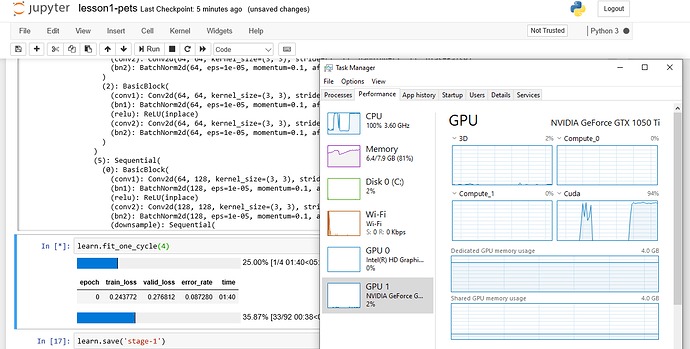After setting up jupyter notebook using pip i ran into error while importing the following modules
from fastai.imports import *
from fastai.structured import *
from pandas_summary import DataFrameSummary
from sklearn.ensemble import RandomForestRegressor, RandomForestClassifier
from IPython.display import display
from sklearn import metrics
these are the errors raised. how can i solve this
ImportError Traceback (most recent call last)
in
----> 1 from fastai.imports import *
2 from fastai.structured import *
3
4 from pandas_summary import DataFrameSummary
5 from sklearn.ensemble import RandomForestRegressor, RandomForestClassifier
c:\users\xyx\appdata\local\programs\python\python36\lib\site-packages\fastai\imports_init_.py in
1 from .core import *
----> 2 from .torch import *
c:\users\xyx\appdata\local\programs\python\python36\lib\site-packages\fastai\imports\torch.py in
----> 1 import torch, torch.nn.functional as F
2 from torch import ByteTensor, DoubleTensor, FloatTensor, HalfTensor, LongTensor, ShortTensor, Tensor
3 from torch import nn, optim, as_tensor
4 from torch.utils.data import BatchSampler, DataLoader, Dataset, Sampler, TensorDataset
5 from torch.nn.utils import weight_norm, spectral_norm
c:\users\xyx\appdata\local\programs\python\python36\lib\site-packages\torch_init_.py in
79 del _dl_flags
80
—> 81 from torch._C import *
82
83 all += [name for name in dir(_C)
ImportError: DLL load failed: The specified procedure could not be found.




